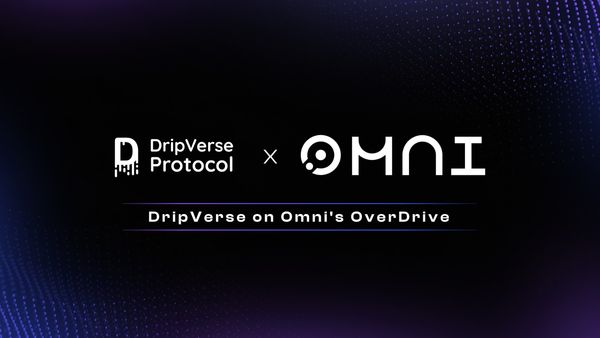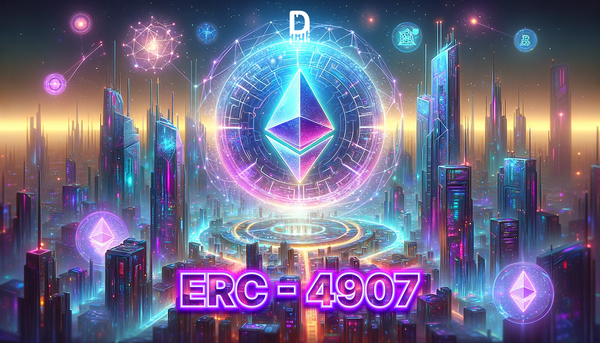Turning NFTs into Productive Assets
In recent years, we’ve seen an enormous increase in NFTs and the creator communities built around it. Some apps and events have tried incorporating NFTs in their regular usage to add “utility” over these NFTs to provide actionable value to the end user. However, these are specific industries just waking up to the huge utility usage of NFTs. While at this expansion, what’s lacking right now is a platform to provide developer toolset to bridge this gap.
The Current State of NFTs
Non-Fungible Tokens (NFTs) have definetly taken the world by a storm. It’s the new hype going on for about a year and half and have completely changed the state and future of web3 in recent times. Going by the name P-Ape, the collector purchased a digital plot of land in Snoop Dogg's new virtual world, Snoopverse, for $450,000. The most expensive NFT in history is actually a series of NFTs, selling for a eye-watering $91.8m price tag in December of last year**. The Merge** was created by renowned digital artist Pak, whose works have grossed more than $350 million, and this piece was bought by 28,983 people who pitched in to snatch a total of 312,000 shares (each of which is an NFT) for nearly $92 million. That’s pretty impressive considering that the starting price of each of these units was $575, only to increase by $25 every six hours. Ultimately, The Merge has made Pak the most valuable living artist in history, surpassing Jeff Koon's 1986 painting Rabbit, which sold for $91 million. Following with Beeple’s Everydays: The First 5000 Days for $69.3 million. It’s no doubt that creativity is valued with a whole diff perspective now. Creators are finally getting the long awaited recognition for their work and passion. But also, this is important for the financial world given each sale of this whopping amount represents a new society that we now are part of.
This new disturbance in force is not random even. People have seen this coming from years ago. The first known NFT was minted on May 3, 2014, by digital artists Kevin McCoy and Anil Dash. The NFT, called Quantum, was a short video clip of McCoy's wife Jennifer. McCoy later minted this clip on the Namecoin blockchain and later sold it to Dash for $4.

Kevin McCoy, “Quantum” (2014-21), non-fungible token (image courtesy of Sotheby’s)
The tech slowly caught up with the world in 2015. Here, the first NFT project called Etheria was launched. It was then displayed in DEVCON London, three months after the launch of Ethereum. In 2017, many new NFT projects were born. Of these, Cryptokitties was the most notable, being many NFT holders' first insight into this new crypto asset.
The term CryptoArt brings up a mix of emotions depending on who you ask. CryptoArt, and NFTs, combine the worlds of time-based media art, backed on the blockchain, decentralized, provably scarce and authentic, and most importantly pro-artist.
Let’s take a look at the timeline of NFTs emergence:
- 2012-2013: Colored Coins
- 2014: Counterparty
- 2015: Spells of Genesis on Counterparty
- 2016: Trading Cards on Counterparty
- 2016: Rare Pepes on Counterparty
- 2017: Cryptopunks
- 2018-2021: The NFT Explosion
Today however, NFTs are largely concentrated around art, collectibles, trading cards, Virtual Worlds and now Music.
While the history of NFTs is intriguing, the future of NFTs has endless opportunities as the new space transitions from raw and experimental to exceedingly more useful and mainstream. Through tokenization, programmability, collaboration, royalties, and more direct connections between artists and collectors, NFTs may soon be a technology vital to everyday life. Concepts like DAOs, token-based Metaverses, community owned financial protocols, and NFT art were small scale experiments just a few years ago. Now they represent multi-billion dollar communities that combine protocol-driven design, economics, and governance as global collectives on the internet.
Open Web Protocol for Utility
With NFTs growing in extreme popularity, the NFT market reached a trading volume of $24.9 billion, according to data presented by DappRadar. While NFTs are driving transformations across various industries, the event market is the forerunner in using NFTs to connect physical and digital ticketing. Before the advent of digital ticketing, people used to collect old-school tickets. Each of those tickets was unique, reviving memories, whether it was an opera night in Vienna, the World Cup in England, or a music festival in California. Now that digitization has streamlined ticketing; ticketing systems have become efficient and reliable for anyone. However, using a simple QR code without any story behind it seems boring. Digital tickets cannot be keepsakes people want to keep and have to reminisce. Currently, the ticketing system can’t help people reflect on special moments from past events. Hence, NFTs have arrived to make tickets more functional and easy to collect for memories.

The first company to explore the gaming/NFT world was Decentraland. Here, gamers could mint these game NFTs and derive value from them through trade and exchange. An NFT game combines conventional gaming designs with unconventional game mechanisms to let users have more control over in-game assets like skins, characters, weapons, virtual lands and much more. This is made possible by launching games on blockchains and anchoring them with digital asset-powered economies. These digital assets are often NFTs so that they are distinguishable and tamper-proof. The adoption of NFT token standards also allows developers to preserve the rarity and uniqueness of some of these in-game items. The Play-to-Earn industry is breaming with users, assets and the every lasting need to upgrade to the next level.

The above two are just examples of how influenced the NFT ecosystem is with adding utilities to assets. Of course, these are all done in their own platforms or apps and connected to some of the most used marketplaces like OpenSea and Rarible. What is lacking is a platform where you can design, configure and customise according to your need and wimp at the touch of a button. Of course, the dev tooling will also included a highly customisable smart contract option where developers would be able to write their custom contract to integrate and/or build plugins for the developer community.
The Future
It’s not difficult to predict how the future will shape up based on past learnings and current standings. We can see an inevitable need for NFTs, SBTs and other asset classes popping up and need to be connected to their apps, projects, events and worlds. We see a more connected ecosystem where any user should be able to not only design and trade but also develop these numerous utilities and program actions to be used and shared across the ecosystem.
Leave us below in comments if in case you have an alternate view. :)
References & Further Reading:
- https://sensoriumxr.com/articles/most-expensive-nft-sales
- https://blog.portion.io/the-history-of-nfts-how-they-got-started/
- https://www.leewayhertz.com/how-nft-ticketing-works/
- https://coinmarketcap.com/alexandria/article/top-nft-games
- https://www.phocuswire.com/first-nft-flight-ticket-sells-for-1-million-in-live-auction
- https://indianexpress.com/article/technology/crypto/at-digital-pratiks-jorrdaar-event-the-only-way-in-is-an-nft-ticket-7990698/
- https://www.outlookindia.com/travel/make-my-trip-launches-nfts-of-travel-destinations-in-india-news-186886




